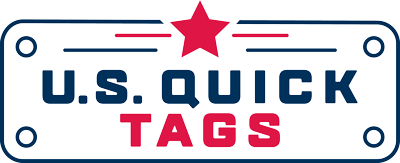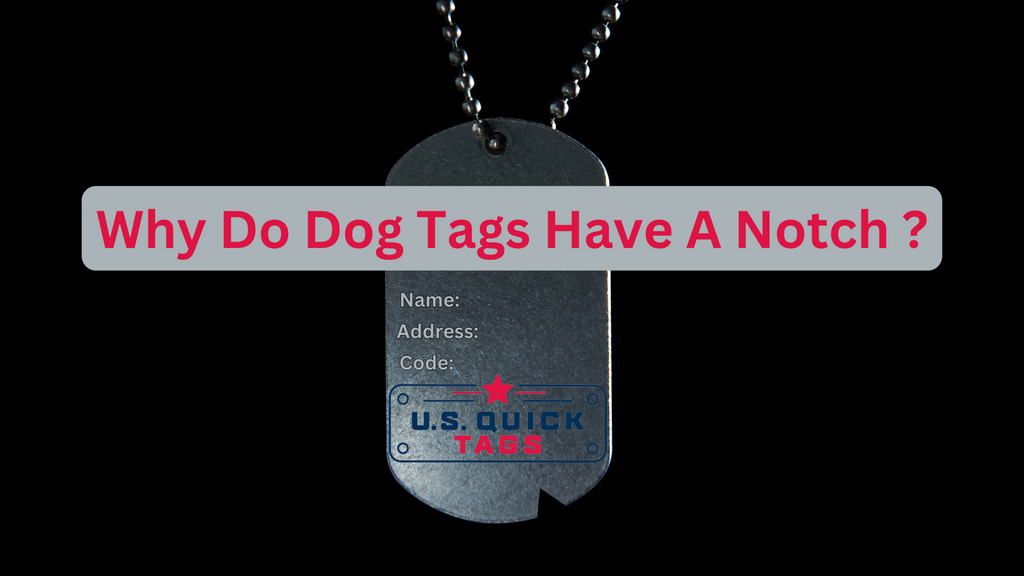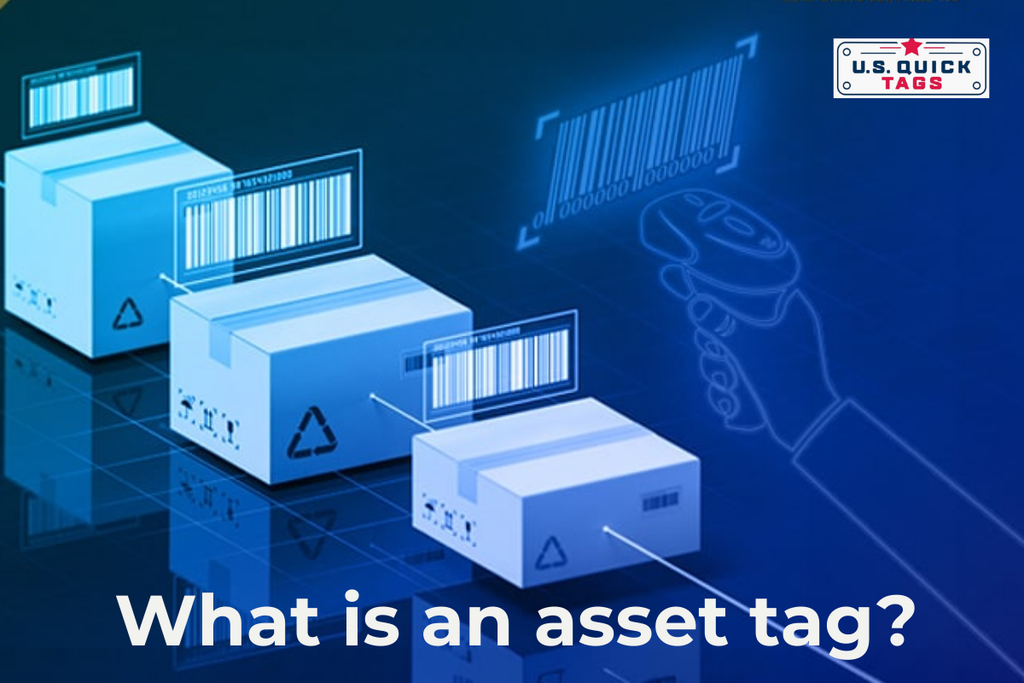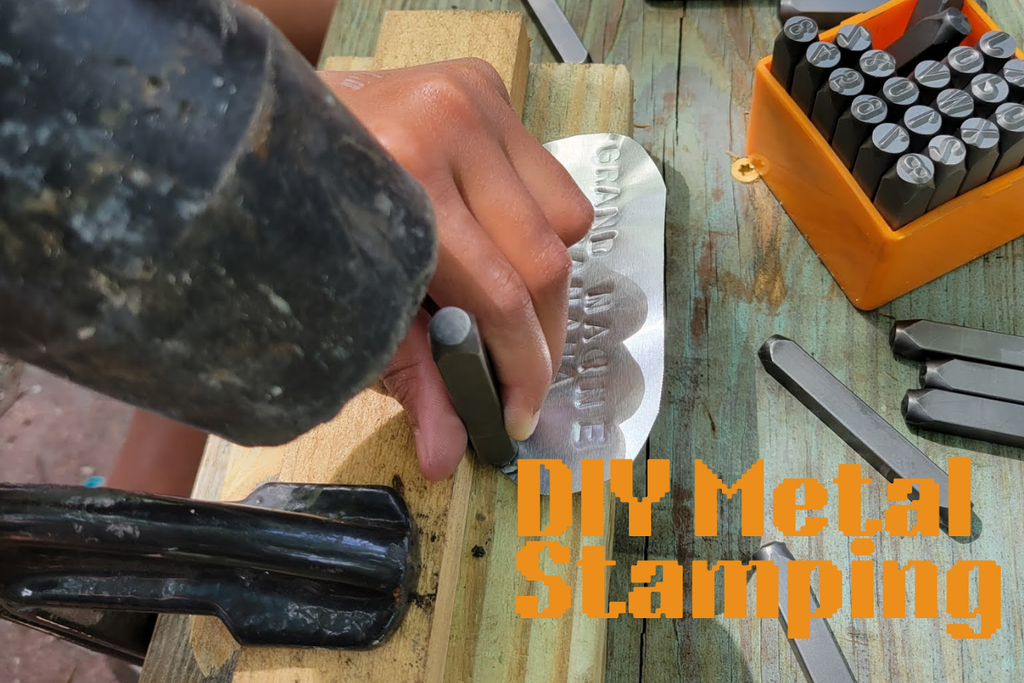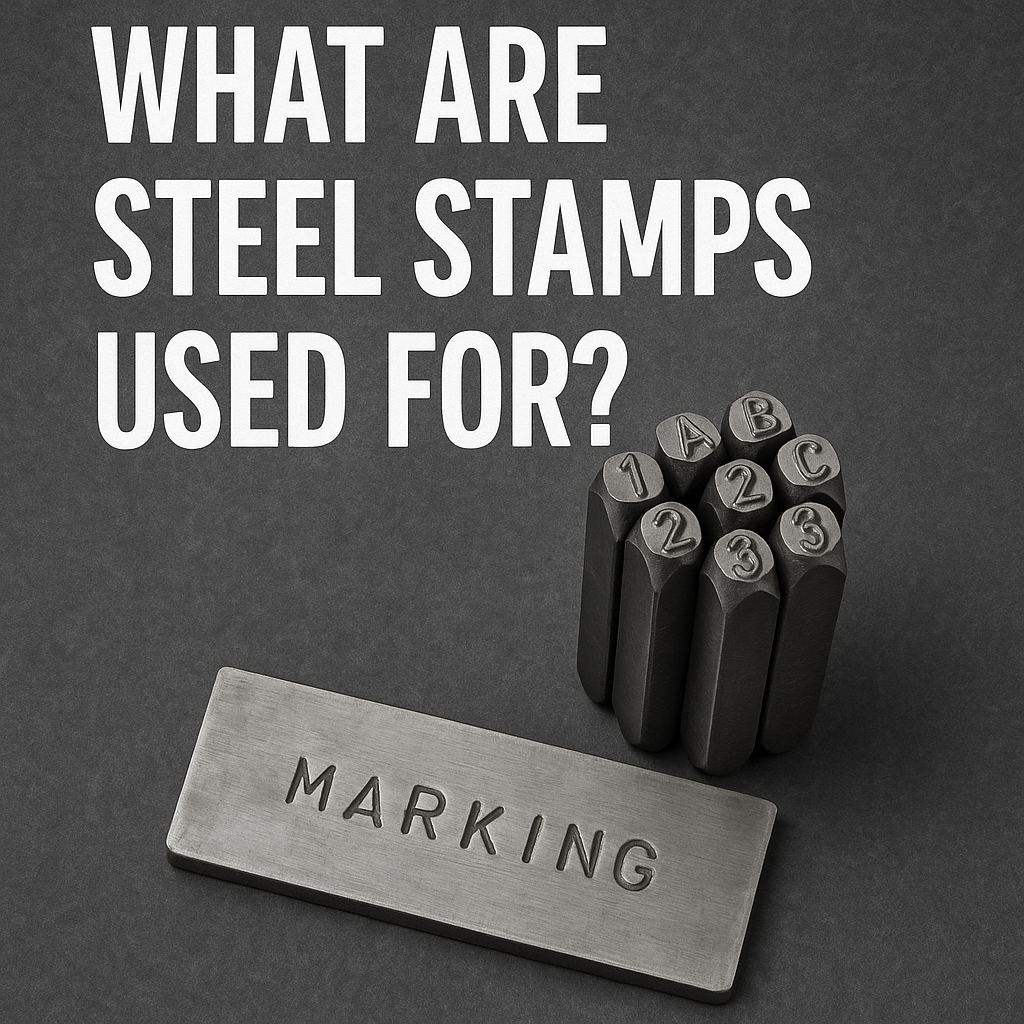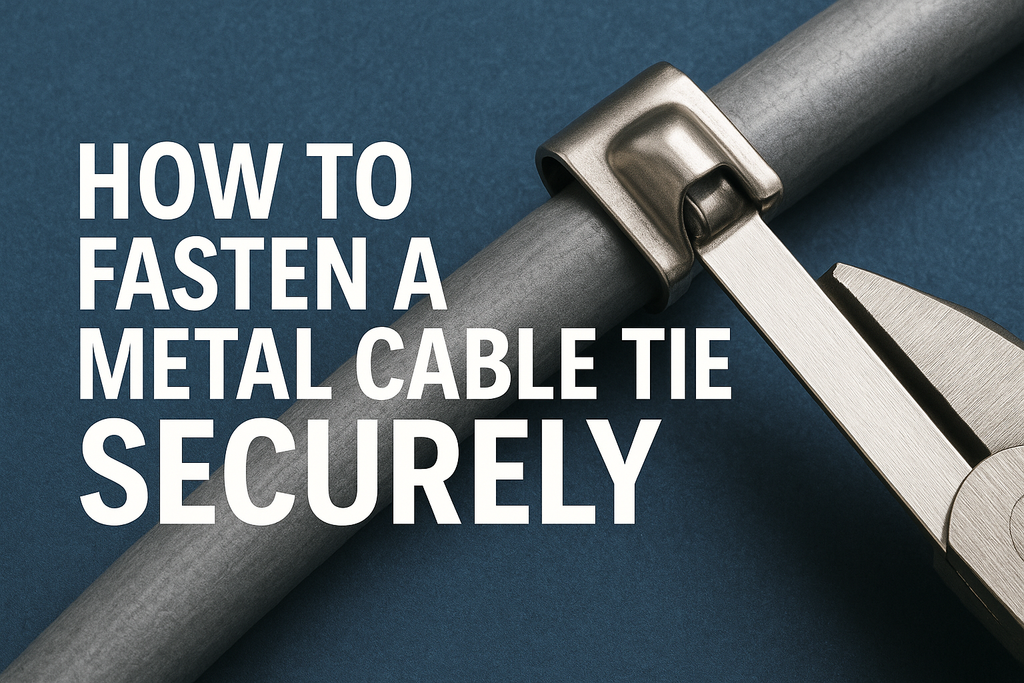Why Do Dog Tags Have A Notch
- USQuickBlogs
- 20 Jul, 2023
Dog tags are military identification tags worn by military personnel. They go beyond being just pieces of metal. They connect soldiers to their past, present, and future, serving as lifelines.
For centuries, dog tags have played a vital role in military operations by ensuring proper identification during war and conflict. They provide essential medical information and help bring fallen heroes back home. But there's a mystery surrounding these tags: Why do dog tags have a notch? Let's explore this question to uncover a hidden purpose beyond mere identification.
The History and Purpose of Dog Tags
Dog tags are crucial for soldiers and military personnel. They help identify who they are, especially in trouble or emergencies. These tags have all their essential information, like their name and medical details.

Wearing dog tags makes it easy to figure out who they are and get the correct information quickly. It is super helpful in war zones or when there's a lot of chaos. Dog tags ensure soldiers can soon recognize and connect to their personal and medical information. It helps with communication and making essential decisions more quickly and accurately.
The evolution of dog tags has seen significant changes in their design and functionality over time. Initially, during the American Civil War, soldiers would often make their own improvised identification tags using simple materials like wood or metal discs. These homemade tags were prone to damage and loss, leading to the development of standardized identification systems.
In the early 20th century, the United States military introduced the first official dog tag system.
These tags are made of metal, typically aluminum or stainless steel, and feature essential information such as the individual's name, serial number, branch of service, and sometimes religious preference. The soldier's dog tags were worn on a chain around the neck, with duplicates kept in the event of loss or damage.
As technology advanced, innovations were made to enhance the durability and efficiency of dog tags. The introduction of embossing machines allowed for the information to be stamped directly onto the metal, reducing the risk of fading or smudging. In more recent years, laser engraving has become a popular method for marking dog tags, providing greater precision and customization options.
Advancements in materials and design have led to more resilient dog tags. Some modern tags incorporate materials like silicone or rubber coatings to reduce noise and minimize wear and tear. Additionally, certain tags now feature QR codes or embedded chips, enabling quick access to extensive medical records and personnel records.
The evolution of dog tags showcases a continuous effort to improve their effectiveness, durability, and ease of use by combat troops. These changes reflect the military's commitment to ensuring accurate identification and efficient communication, ultimately prioritizing the safety and well-being of soldiers and military personnel in various operational contexts.
Components of Dog Tag

Typical army dog tags consist of several vital components that provide essential information about the individual wearing them. These components include:
Individual's Name:
The dog tag displays the person's full name, allowing for easy identification.
Identification Number:
Each individual is assigned a unique identification number, often a serial number or service number. This number helps in tracking and record-keeping within military systems.
Branch of Service:
Dog tags may indicate the branch of the military to which the individual belongs, such as the Army, Navy, Air Force, Marines, or Coast Guard.
Blood Type:
One critical medical information on dog tags is the individual's blood type. This information is crucial in emergencies where immediate medical treatment is required.
Religious Preference:
Some dog tags may include a field indicating the individual's religious preference. It allows for considering specific religious practices and customs in case of injury, treatment, or final arrangements.
Medical Information:
Dog tags may sometimes include additional medical information, such as allergies, specific medical conditions, or required medications. This information aids medical personnel in providing appropriate care during emergencies.
The Notched Dog Tags Mystery

The notch on dog tags is a distinct feature that serves a specific purpose. This small cutout, often seen on one side of the tag, is more than just a decorative element. It has a practical function that enhances the functionality of the dog tag itself.
The purpose of the notch is to allow for the easy and efficient removal and replacement of the dog tag from its chain or attachment. With a small notch, the tag can be quickly detached or slid off the chain without requiring any tools.
This feature is particularly important when immediate access to the tag is necessary, such as during medical procedures or when transferring the tag to another chain or piece of equipment.
The notch provides a convenient and time-saving method for soldiers and military personnel to remove dog tags when needed while ensuring secure attachment during normal wear. It simplifies the process and eliminates the need for additional tools or complicated mechanisms, allowing for swift and hassle-free handling of the dog tag.
While the notch may seem like a minor detail, its purpose highlights the practical considerations involved in designing dog tags. It is a testament to the emphasis placed on functionality and ease of use, ensuring that the identification tag remains readily accessible and securely attached at all times, even in demanding and fast-paced situations.
The Role of the Notch in Dog Tags
The practical function of the notch on dog tags is to facilitate the easy removal and replacement of the tag from its chain or attachment. The small cutout or groove serves as a time-saving and convenient feature that allows for swift handling of the tag without the need for additional tools or complicated mechanisms.

The notch enables military personnel or individuals wearing dog tags to quickly slide the tag off the chain or attachment by using their fingers. This functionality proves especially valuable in situations where immediate access to the tag is necessary, such as during medical procedures or when transferring the tag to another chain or piece of equipment.
In medical emergencies, the notch allows medical personnel to swiftly remove the dog tag for necessary treatment or identification purposes. It ensures efficient access by the medical department to wounded soldier's identification information, such as blood type or medical conditions, that might be crucial for providing appropriate care.
The notch simplifies the process of replacing a damaged or worn-out chain. It allows for hassle-free detachment of the tag from the old chain and effortless attachment of the second tag to a new one, ensuring that the identification remains securely in place.
Overall, the practical function of the notch on dog tags streamlines the handling and accessibility of the tag, enhancing efficiency and ease of use. It serves as a practical design element that enables quick removal and replacement of one tag when needed, without compromising the secure attachment of the tag during normal wear.
How the Notch Aids in the Removal and Replacement of Damaged Tags
In addition to its role in the embossing process, the notch on dog tags also aids in the removal and replacement of damaged tags.
Here's how the notch serves this purpose:
Easy Removal
When a dog tag becomes damaged, such as through wear and tear or accidents, it may need to be replaced. The notch plays a crucial role in facilitating the removal of the damaged tag from its chain or silencer. By providing a designated point of leverage, the notch allows for easier detachment of the tag, minimizing the risk of further damage to the chain or silencer.
Replacement
Once the damaged tag is removed, the notch becomes particularly helpful in the replacement process. When inserting a new tag onto the chain or silencer, the notch acts as a guide for aligning the metal tag itself correctly. By fitting into a corresponding slot on the chain or silencer, the notch ensures that the tag is positioned in the proper orientation and prevents it from rotating or shifting excessively.
Efficient Maintenance
The inclusion of the notch on dog tags streamlines the maintenance process for military personnel or individuals responsible for managing identification tags. In cases where tags need to be regularly inspected, updated, or replaced, the notch allows for quicker and more efficient handling of the tags. It simplifies the task of removing and reattaching tags, saving time and effort.
Adaptability
The presence of the notch on dog tags allows for compatibility with various types of chains and silencers. Different organizations or individuals may use different attachment mechanisms for their dog tags, such as ball chains, rubber silencers, or alternative fasteners. The notch ensures that the tags can be easily accommodated by these different systems, maintaining consistency and compatibility across various setups.
While the notch aids in the removal and replacement of damaged tags, advancements in technology and changes in tag design have led to the development of alternative methods for tag attachment and replacement.
Some modern dog tags may utilize mechanisms like quick-release fasteners or snap-on systems, reducing the reliance on the notch for these purposes. Nonetheless, the notch remains a recognizable and practical feature on traditional-style dog tags.
Bottomline
The purpose of the notch on dog tags is to help during tag production and make it easier to remove and replace damaged tags. However, because of advancements in technology and changes in tag design, the notch is not as important as it used to be.

Technology has improved how tags are made. Now, laser engraving and computerized embossing methods are used instead of manual embossing. These new techniques allow for precise customization of dog tags without needing to align the tags using the notch. So, the notch is not as necessary for proper alignment anymore.
Tags nowadays also have different ways to attach them. Quick-release fasteners, snap-on mechanisms, and other attachment methods are commonly used. These methods don't rely on the notch for alignment. They make it easy to remove and replace tags without needing to align the notch with a slot or hole.
Tag designs have also changed. Some modern dog tags look different and don't have a notch. These designs focus more on how the tag looks, how comfortable it is to wear, and how well it functions, rather than having a notch.
Even though the notch is not as important anymore, it still has historical significance and is a recognizable feature of traditional-style dog tags. Some military branches or countries still use modern military dog tags with notches to maintain a traditional design.
The notch on dog tags used to have practical purposes during tag production and replacement. But because of technological advancements and changes in tag design, it is gradually becoming less relevant. However, the historical importance and recognition of the notch in the world of dog tag identification still remain.
